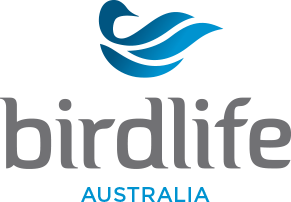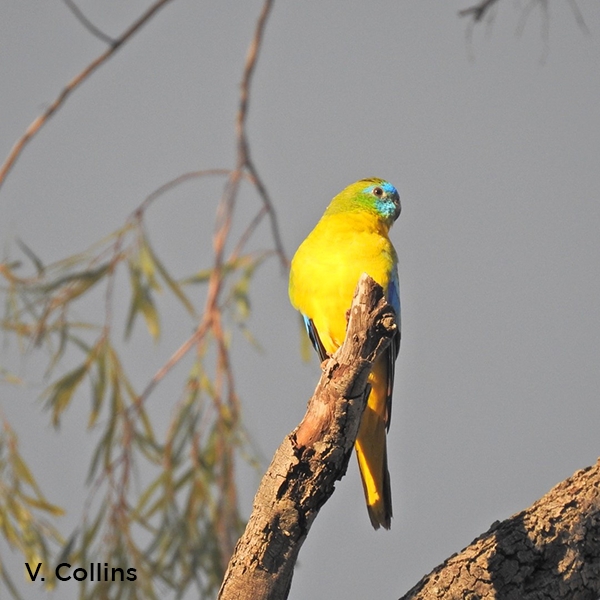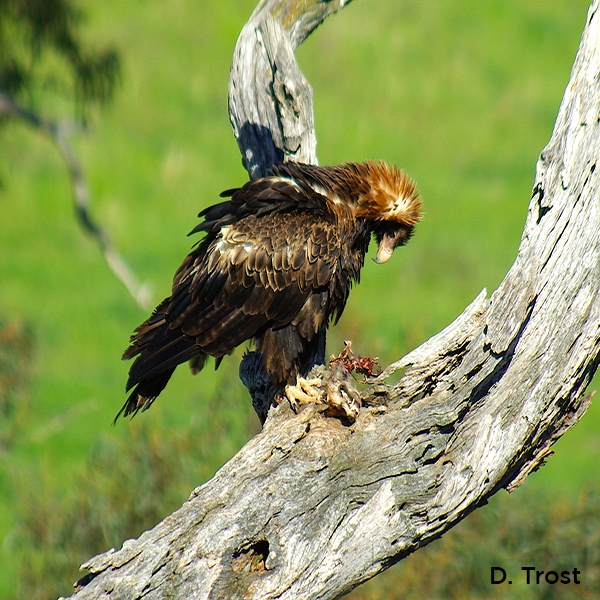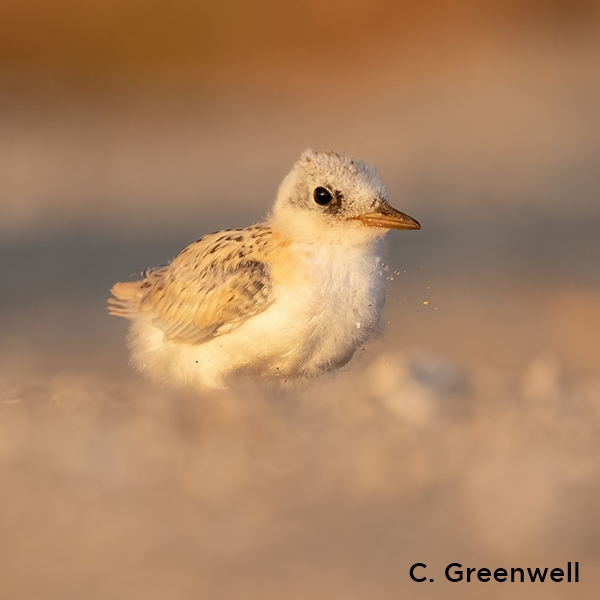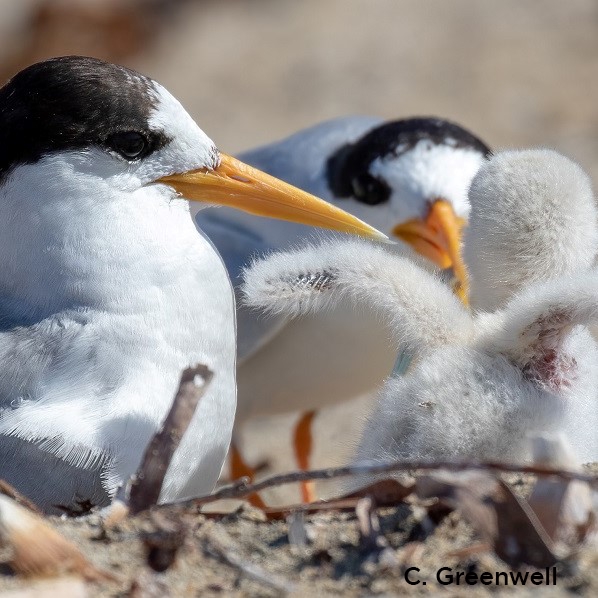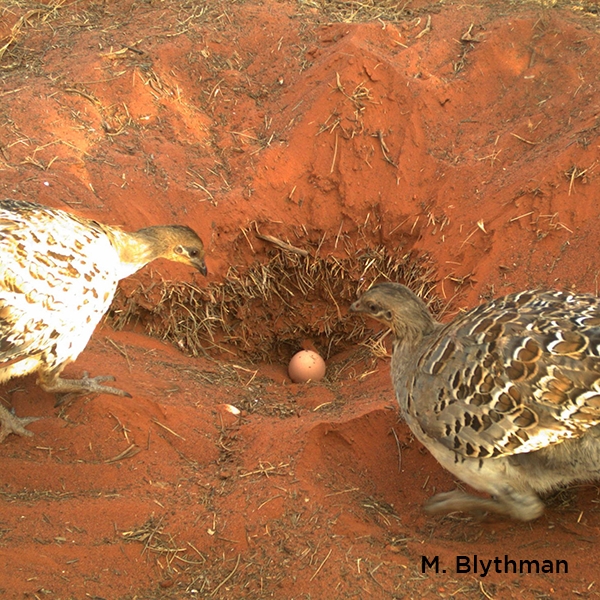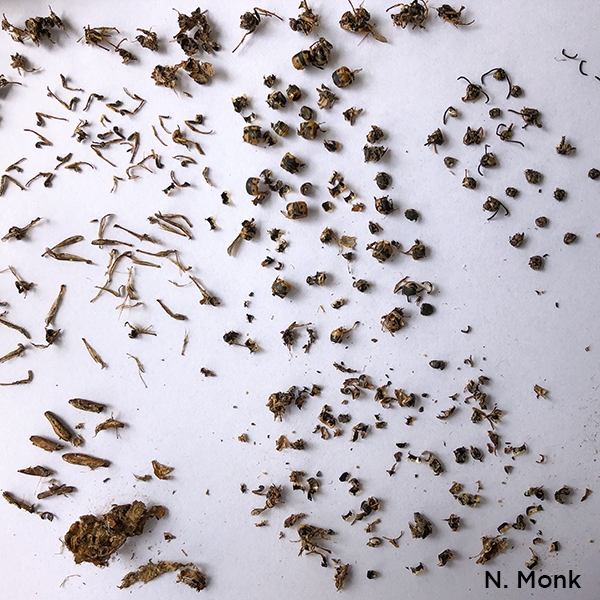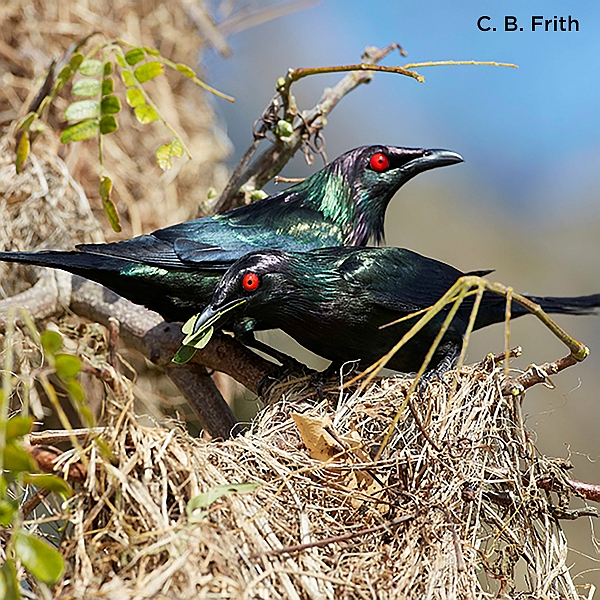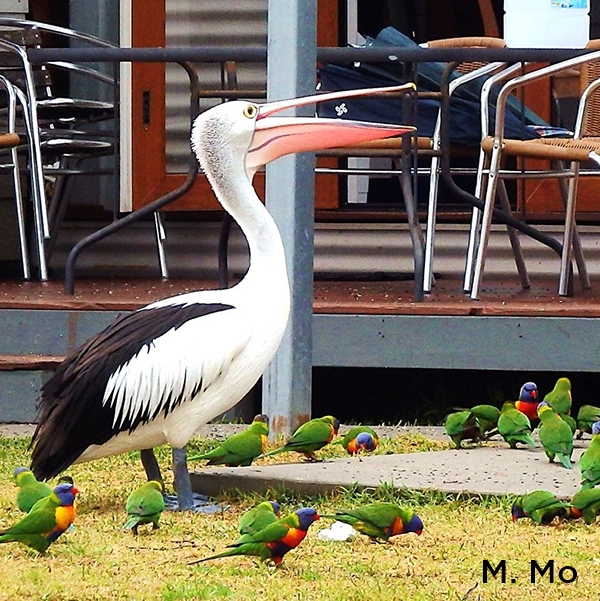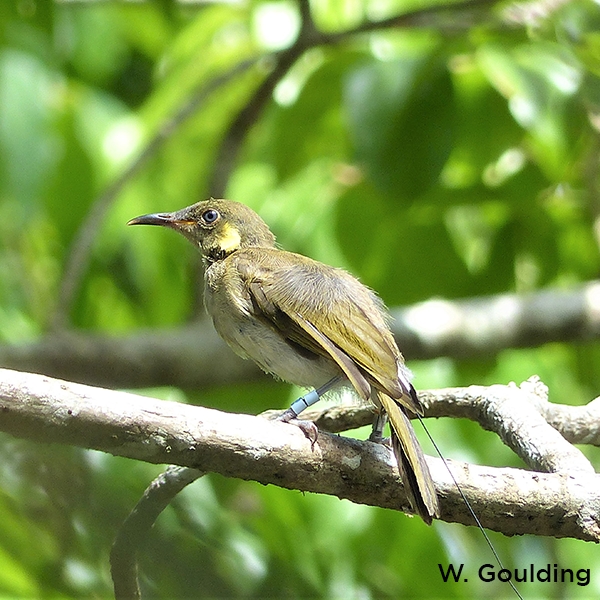Rapid southward range expansion of the Fairy Gerygone – a consequence of climate change?
Richard A. Noske
Abstract
in the Brisbane region have been mostly along rivers or creeks emptying into Moreton Bay, suggesting that dispersal occurs southward along the coast, then inland via watercourses. Rather than being gradual, range expansion in this species has been characterised by ‘leaps’ of 45–59 km at intervals of 6–16 years. Since the early 1970s, at least five other tropical bird species have expanded their range southwards to Coastal Central Queensland. The most likely explanation for such range expansions is birds exploiting ‘new’ areas with suitable thermal regimes that have become available due to global warming. In the Fairy Gerygone, this process may be facilitated by (1) this species’ partiality for forest edge and riparian habitats, and (2) reduced competition with other gerygone species due to differences in preferred habitats and bill morphology.
References
Accad, A., Kelley, J.A.R., Richter, D., Li, J., Neldner, V.J. & Ryan T.S. (2023). Remnant Regional Ecosystem Vegetation in Queensland (Version 13.0), Analysis 1997-2021. Queensland Department of Environment & Science, Brisbane.
ALA (Atlas of Living Australia) (2021). Open access to Australia’s biodiversity data. Available at https://www.ala.org.au (accessed 15 December 2021).
Appleby, G. & O’Brien, M. (2015). An expansion of the range of the Brown Gerygone in Victoria, 1977–2009. Australian Field Ornithology 32, 26–37.
Barrett, G., Silcocks, A., Barry, S., Cunningham, R. & Poulter, R. (2003). The New Atlas of Australian Birds. Royal Australasian Ornithologists Union, Melbourne.
Blakers, M., Davies, S.J.J.F. & Reilly, P.N. (1984). The Atlas of Australian Birds. Melbourne University Press, Melbourne.
Briggs, A. & Noske, R.A. (2021). The avifauna of Rockhampton revisited after 45 years: Additions, deletions and a checklist covering 135 years. Sunbird 49, 1–39.
Britton, P.L. (1992). The Queensland Ornithological Society Bird Report, 1991. Sunbird 22, 51–83.
Broadbent, K. (1888). Birds of the central part of Queensland. Proceedings of the Royal Society of Queensland 5, 14–31.
Brooker, M.G. & Brooker, L.C. (1989). Cuckoo hosts in Australia. Australian Zoological Reviews 2, 1–67.
Bureau of Meteorology (2023). Climate data. Available at: http://www.bom.gov.au/climate/data (accessed 20 November 2023).
Chambers, L.E, Hughes, L. & Weston, M.A. (2005). Climate change and its impact on Australia’s avifauna. Emu 105, 1–20.
Chen, I-C., Hill, J.K., Ohlemüller, R., Roy, D.B. & Thomas, C.D. (2011). Rapid range shifts of species associated with high levels of climate warming. Science 333, 1024–1026.
Chisholm, A.H. (1925). The Fairy Warbler: A re-discovery. Emu 24, 161–165.
Cooper, R.M., McAllan, I.A.W., Brandis, C.C.P. & Curtis, B.R. (2016). An Atlas of the Birds of New South Wales and the Australian Capital Territory, Volume 2 – Comb-crested Jacana to Striated Pardalote. NSW Bird Atlassers Inc., Sydney.
Coristine, L.E. & Kerr, J.T. (2015). Temperature-related geographical shifts among passerines: Contrasting processes along poleward and equatorward range margins. Ecology and Evolution 5, 5162–5176.
Crossley, G. (2004). Outing and campout reports: Numabulla. Birds Queensland Newsletter 35 (2), 6.
eBird (2021). eBird: An online database of bird distribution and abundance. Cornell Lab of Ornithology, Ithaca, New York, USA. Available at: http://www.ebird.org (accessed 15 December 2021).
eBird (2023). eBird: An online database of bird distribution and abundance. Cornell Lab of Ornithology, Ithaca, New York, USA. Available at: http://www.ebird.org (accessed 20 November 2023).
Fazlioglu, F., Wan, J.S.H. & Chen, L. (2020). Latitudinal shifts in mangrove species worldwide: Evidence from historical occurrence records. Hydrobiologia 847, 4111–4123.
Ford, J. (1978). Conspecificity of the Black-throated and Fairy Warblers. Emu 78, 75–79.
Garnett, S. & Franklin, D. (Eds) (2014). Climate Change Adaptation Plan for Australian Birds. CSIRO Publishing, Melbourne.
Glushenkov, O. (2017). The extending of ranges of some bird species at the north-eastern border of their distribution due to intra-century climate changes. Nature Conservation Research 2 (3), 23–39.
Gynther, I. (2015). Large-tailed Nightjar Caprimulgus macrurus on the Maroochy River of Queensland’s Sunshine Coast: A probable recent expansion of range. Sunbird 45, 28–47.
Hall, B.P. (1974). Birds of the Harold Hall Australian Expeditions, 1962-70. Trustees of the British Museum (Natural History), London.
Hickling, R., Roy, D.B., Hill, J.K., Fox, R. & Thomas, C.D. (2006). The distributions of a wide range of taxonomic groups are expanding polewards. Global Change Biology 12, 450–455.
Higgins P.J. & Peter, J.M. (Eds) (2002). Handbook of Australian, New Zealand & Antarctic Birds, Volume 6: Pardalotes to Shrike-thrushes. Oxford University Press, Melbourne.
Hindwood, K.A. & McGill, A.R. (1956). The Mangrove Warbler - extension in range. Emu 56, 145–146.
Hitch, A.T. & Leberg, P.L. (2007). Breeding distributions of North American bird species moving north as a result of climate change. Conservation Biology 21, 534–539.
Johnson, D.D.P. & Mighell, J.S. (1999). Dry-season bird diversity in tropical rainforest and surrounding habitats in north-east Australia. Emu - Austral Ornithology 99, 108–120.
Jones, M.V. (1981). Birds of the Maryborough District, Queensland, 1972-1980. Australian Bird Watcher 9, 1–13.
Keast, A. & Recher, H.F. (1997) The adaptive zone of the genus Gerygone (Acanthizidae) as shown by morphology and feeding habits. Emu 97, 1–17.
Longmore, N.W. (1978). Avifauna of the Rockhampton area, Queensland. Sunbird 9, 25–53.
Massimino, D., Johnston, A. & Pearce-Higgins, J.W. (2015). The geographical range of British birds expands during 15 years of warming. Bird Study 62, 523–534.
McAllan, I., Cooper, D. & Curtis, B. (2007). Changes in ranges: An historical perspective. In: Olsen, P. (Ed.) (2007). The State of Australia’s Birds 2007: Birds in a Changing Climate, pp. 12–13. Wingspan Supplement 14 (4).
McGill, A.R. (1970). Australian Warblers. Bird Observers Club, Melbourne.
McGill, A.R. (1984). The southward extension of range in the Mangrove Warbler. Australian Birds 18, 33–35.
Menkhorst, P., Rogers, D., Clarke, R., Davies, J. & Franklin, K. (2017). The Australian Bird Guide. CSIRO Publishing, Melbourne.
Muir, D. (1993). Members’ sightings. Birds Queensland Newsletter 23 (10), 8.
Nix, H.A. (1972). Fauna of the Shoalwater Bay area Part 7. In: Gunn, R.H., Galloway, R.W., Walker, J., Nix, H.A., McAlpine, J.R. & Richardson, D.P. (Eds). Shoalwater Bay Area, Queensland. Technical Memorandum 72/10. Division of Land Research, CSIRO, Australia.
Nix, H.A. (1984). The Buff-breasted Paradise Kingfisher in central Queensland. Sunbird 14, 77–79.
Nix, H.A. (1985). The Fairy Gerygone at Tin Can Bay. Sunbird 15, 4–5.
Noske, R.A. & Briggs, A. (2021). Species loss and decline among birds of coastal Central Queensland over 130 years. Pacific Conservation Biology 28, 427–443.
Noske, R.A. & Niland, D. (2022). Queensland annual bird report, 2018-2019: Introduction. Sunbird 49, 1–7.
Nyári, Á.S. & Joseph, L. (2012). Evolution in Australasian mangrove forests: Multilocus phylogenetic analysis of the gerygone warblers (Aves: Acanthizidae). PLoS ONE 7, e31840.
Olsen, P. (2007). The State of Australia’s Birds 2007: Birds in a Changing Climate. Wingspan Supplement 14 (4), 1–32.
Queensland Government (2022). Regional Ecosystem descriptions. Available at: https://apps.des.qld.gov.au/regional-ecosystems/list/ (accessed 7 July 2022).
Queensland Government Department of Resources (2022). Queensland Globe. Available at: https://qldglobe.information.qld.gov.au/ (accessed 7 July 2022).
Redhead, D.I. (1988). The Queensland Ornithological Society Bird Report, 1986. Sunbird 18, 28–51.
Reside, A.E., VanDerWal, J., Garnett, S.T. & Kutt, A.S. (2016). Vulnerability of Australian tropical savanna birds to climate change. Austral Ecology 41, 106–116.
Roberts, G.J. (1976). Fairy Warbler. Queensland Ornithological Society Newsletter 7 (12), 1.
Roberts, G. (2012). Fairy Gerygone and Spotted Harrier on the Sunshine Coast. 29 January 2012. Available at: http://sunshinecoastbirds.blogspot.com/2012/01/fairy-gerygone-spotted-harrier-on.html
Saintilan, N. & Williams, R.J. (1999). Mangrove transgression into saltmarsh in south-east Australia. Global Ecology and Biogeography 8, 117–124.
Schodde, R., Catling, P.C., Mason, I.J., Richards, G.C. & Wombey, J.C. (1992). Land Vertebrate Survey of Shoalwater Bay Training Area, Queensland. CSIRO Division of Wildlife & Ecology for Australian Department of Defence, Canberra.
Silcocks, A. & Sanderson, C. (2007). Volunteers monitoring change: The Atlas of Australian Birds. In: Olsen, P. (Ed.) (2007). The State of Australia’s Birds 2007: Birds in a Changing Climate, pp. 10–11. Wingspan Supplement 14 (4).
Storr, G.M. (1973). List of Queensland Birds. Special Publication of the Western Australian Museum, Number 5. Western Australian Museum, Perth.
Storr, G.M. (1984). Revised List of Queensland Birds. Records of the Western Australian Museum, Supplement 19, 1–189.
VanDerWal, J., Murphy, H.T., Kutt, A.S., Perkins, G.C., Bateman, B.L., Perry J.J. & Reside, A.E. (2013). Focus on poleward shifts in species’ distribution underestimates the fingerprint of climate change. Nature Climate Change 3, 239–243.
Wildlife Queensland Sunshine Coast & Hinterland Inc. (2021). Fauna Watch. Available at: https://wildlife.org.au/our-work/conservation-programs/faunawatch/ (accessed 15 December 2021).
WildNet (2021). WildNet database. Available at https://apps.des.qld.gov.au/species-search (accessed 15 December 2021).
Wolstenholme, H. (1925). Notes on the birds observed during the Queensland congress and campout, 1924. Part 2. Emu 24, 243–251.
